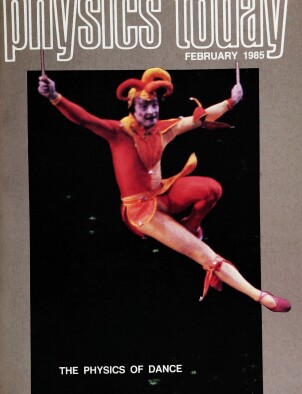The Physics of Dance
DOI: 10.1063/1.880998
Most dance enthusiasts—dancers, teachers and spectators—consider dance to be a purely aesthetic performing art, involving human body movement performed to music. They recognize that the challenge for the dancer is to communicate the visual images intended by the choreographer and the dancer. Many also realize that part of the enjoyment of dance depends on recognizing the difficulty of performing these movements well—making physically challenging steps appear smooth and graceful. Few, however, take the further step of analyzing the physics of these movements to understand the difficulties facing the performer. Why are certain movements particularly difficult? Some movements appear to violate fundamental physical principles. How does a dancer create such illusions? How do dancers use physical principles of motion to their advantage, rather than fight against them?
This article is only available in PDF format
References
1. D. Webster, Philadelphia Inquirer, 4 April 1978.
2. S. K. Langer in Problems of Art, Scribners, New York (1957), p. 5.
3. Dancemagazine, September 1978.
4. S. Plagenhoef, Patterns of Human Motion, Prentice‐Hall, Englewood Cliffs, N.J. (1971) Chap. 3;
S. Plagenhoef, after W. T. Dempster, WADC Tech. Report 55, 159 (1955);
S. Plagenhoef, after K. Kjeldsen, Body Segment Weights of College Women, Master’s thesis, University of Massachusetts (1969).
More about the Authors
Kenneth Laws. Dickinson College, Carlisle, Pennsylvania.




